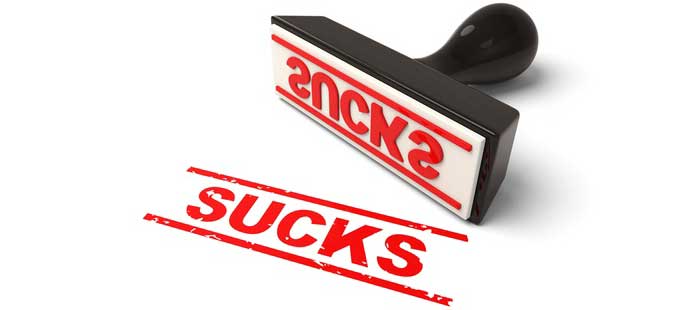Even the greatest writers write badly. Not just bad first drafts, but poorly constructed sentences, verb-tense errors, and run-on sentences, too. It’s easier to see mistakes in someone else’s writing than it is your own. Learning to catching your own mistakes and weaknesses, though, will help you improve your writing. That naturally leads to more work and greater success.
Tell-Tale Signs of Bad Writing
Just about everyone can write, but not everyone writes well. The irony, of course, is that while those whose writing is adequate are pretty happy people, those who write well are always looking to do better.
If you do a lot of content writing, it’s easy to fall into some bad habits. In the race to meet deadlines, there can be a tendency to fall back on what always works and be done with it. Up comes the next title, and the same missteps are repeated. If you have a nagging feeling your writing isn’t its best, check it to see if you might be making one or more of these common mistakes.
- Vague, unclear writing that has no direction or, worse, too many of them. Good writing has a strong purpose. That’s why it’s so important to have a deep knowledge of your topic. If you don’t, you’ll be tempted to fill your piece with clichés and generalizations. Readers looking for relevant content will be left dissatisfied, never to return. If you simply don’t have the time to research an unfamiliar topic, find another writer who can do the piece justice or pass on the assignment.
- Ignores the reader. The style may be stellar, but if your content doesn’t address what the reader needs to hear, it’s of no value. Make sure the reader’s problem, or pain point, is clearly stated.
- Failure to edit. Truman Capote once said “I’m all for the scissors. I believe more in the scissors than I do in the pencil.” The same applies to keyboards. Most writing can be improved by multiple rewrites that trim away the excess.
- Awkward transitions. Or worse, non-existent ones. From emails to white papers, it doesn’t matter what you’re writing. You must connect your sentences and paragraphs. Nothing’s more confusing for a reader than ideas that aren’t clearly explained or are left hanging. Don’t force your readers to make leaps of logic or assume they understand what you meant to say. As the writer, it is your responsibility to get the point across.
- Filler words. Learn how to cut the padding out of your writing. This is different from editing. Don’t use words like “um” and “ah.” Eliminate superfluous words and use readability metrics to ensure you’re writing in way most people will understand. There are plenty of free readability tools available online and if you work in Word, it’s included as part of the spellcheck function.
- Clichés. This is an easy writing trap to fall into. Clichés are clichés because they’re true, but that doesn’t mean you should overpopulate your writing with them. Overusing clichés can irritate the reader and distract her or him from the important point you’re trying to make. Use metaphors or real-life anecdotes instead.
Don’t Bore Your Readers
Just about all bad writing is boring writing. Whether it’s too confusing, too disengaged, over-the-top, or goes nowhere and offers nothing, if people don’t want to read it, it’s sucky writing.
The good news is that bad writing is not the same as being a bad writer. Bad habits can be broken. All it takes is a willingness to listen to criticism and recognize good feedback when you get it. Resign yourself to the fact that first drafts tend to suck and do what you must to improve it.
Even the best writers find the work difficult. No writer is perfect, and every writer can improve. Recognizing your own bad writing and finding ways to better it is an ongoing process. Fortunately, like most things, the more you do it, the more motivated you’ll be to keep going!






